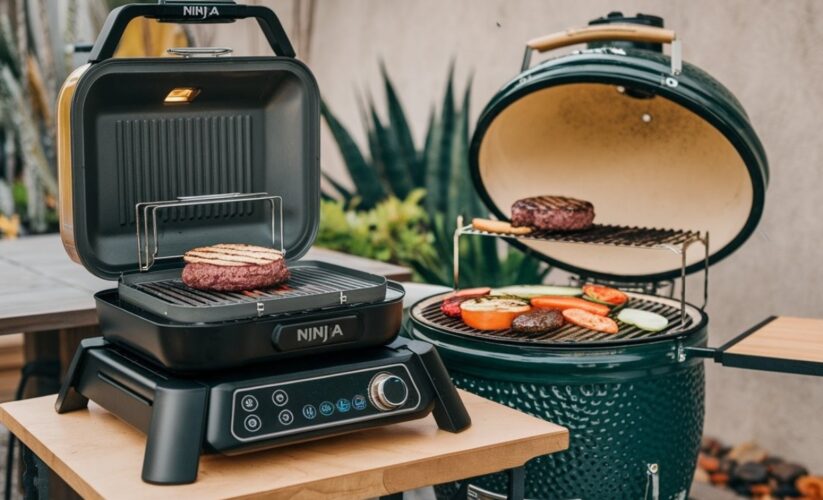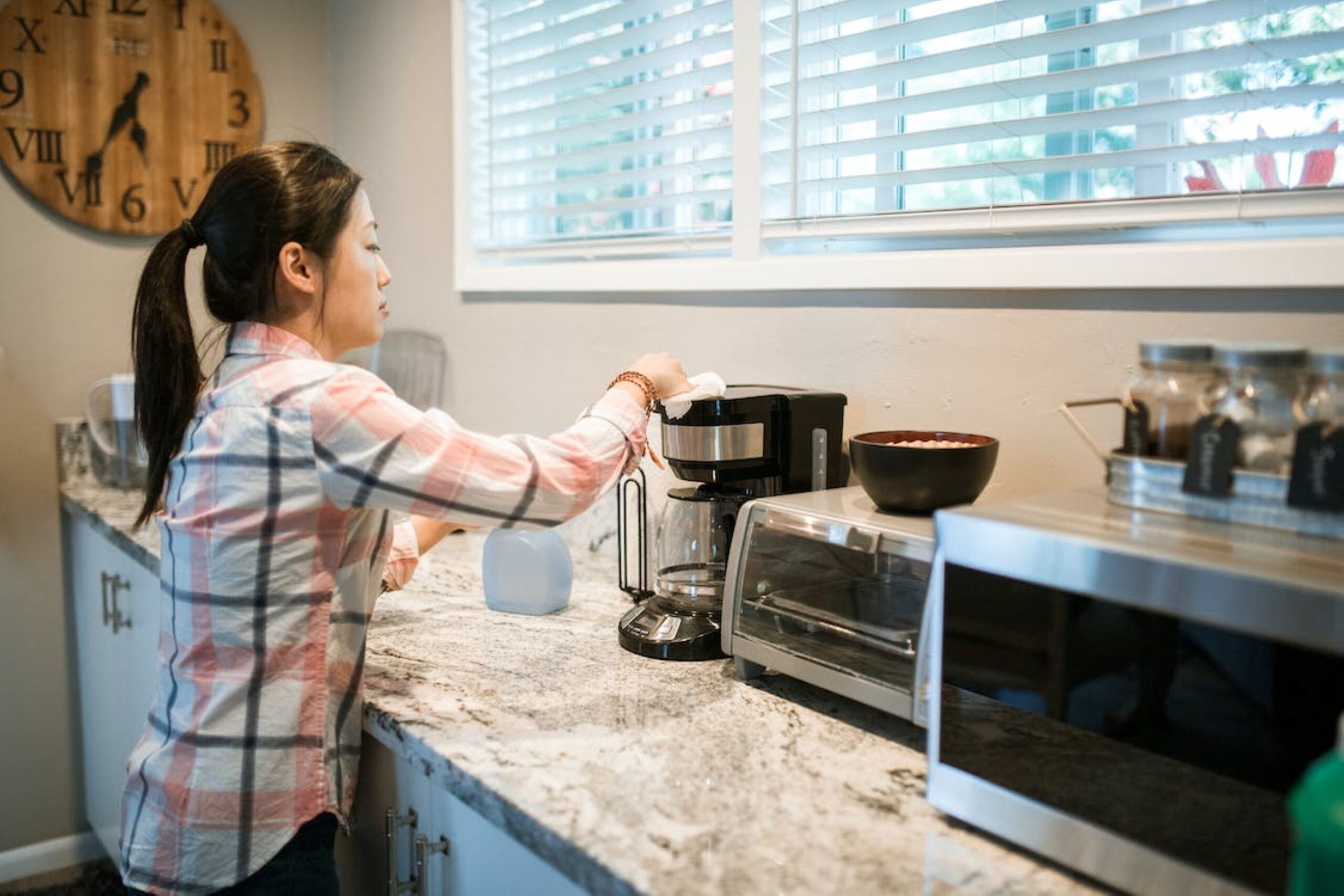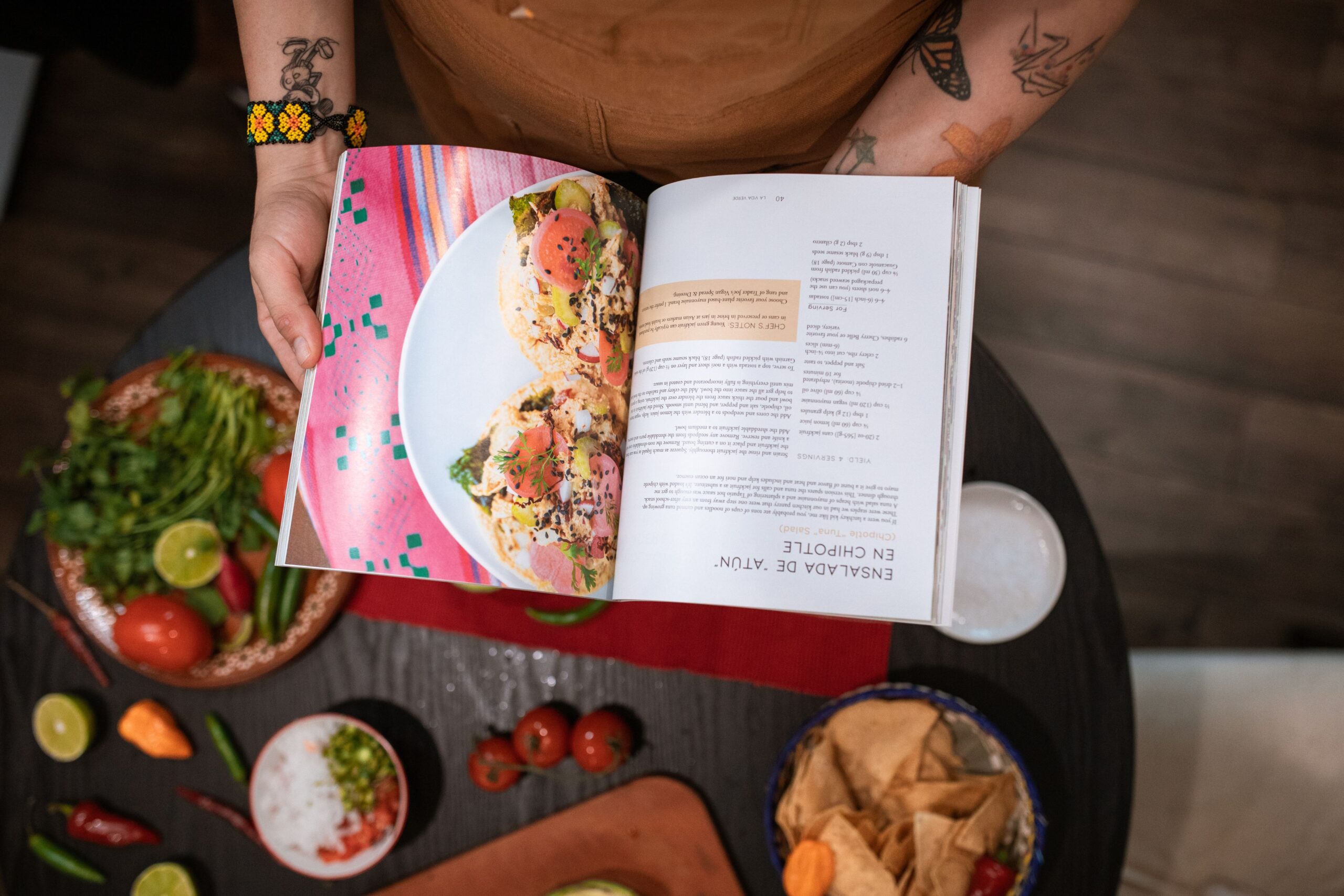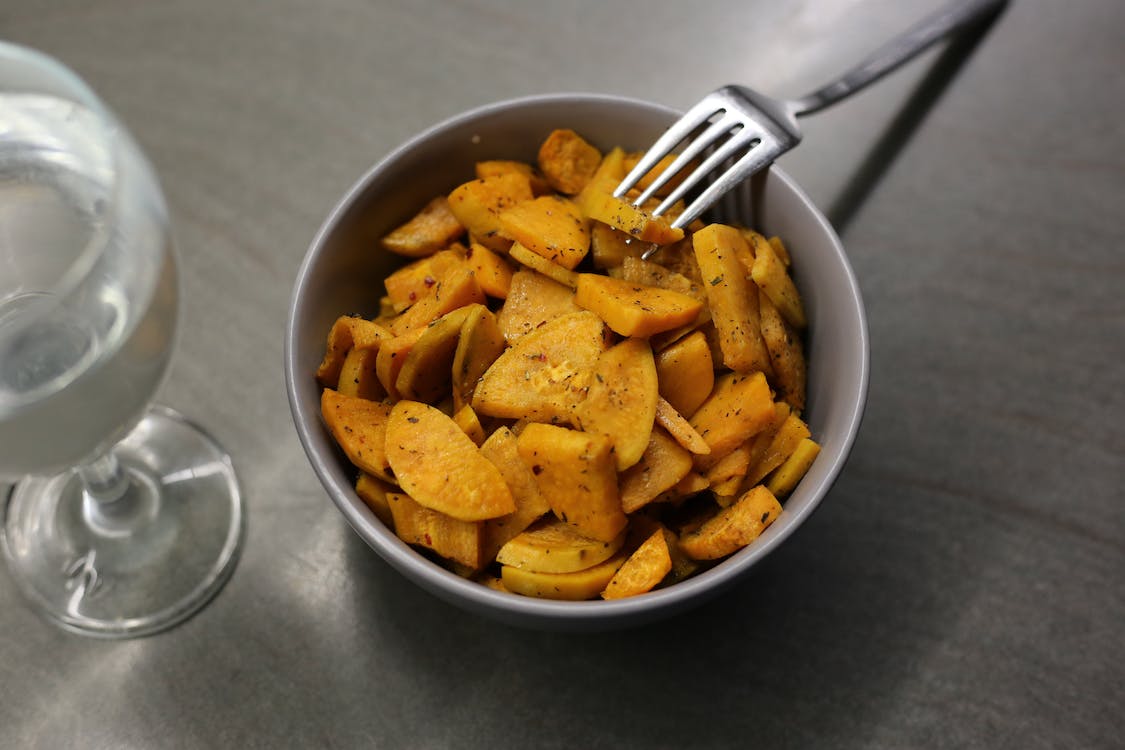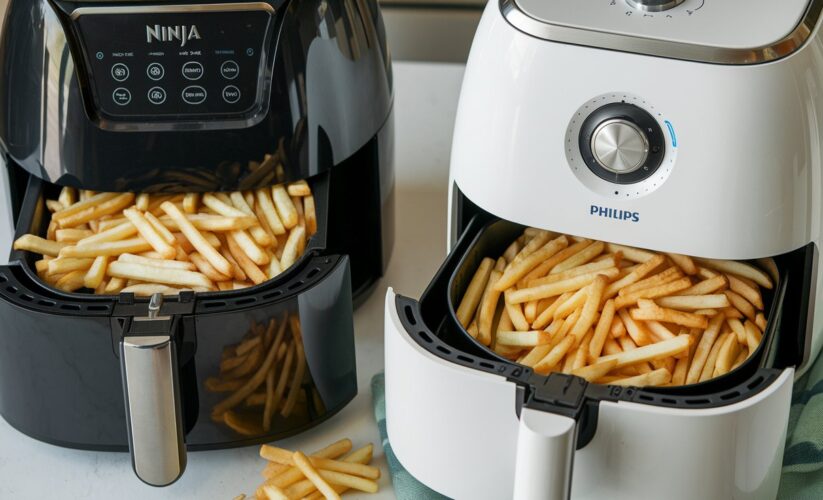
Ninja Air Fryer vs Philips Air Fryer
After spending countless hours testing air fryers in my kitchen, I’ve developed strong opinions about which brands deliver the best results. Ninja Air Fryer vs Philips Air Fryer consistently stand out as industry leaders, but they offer distinctly different experiences for home cooks.
I’ve air-fried everything from crispy chicken wings to delicate pastries, comparing how these two powerhouse brands perform across various cooking tasks. If you’re torn between these popular air fryer options, I’m here to help you make the right choice for your kitchen needs and budget.
Key Takeaways
- Ninja air fryers offer exceptional value with larger capacities and multi-functionality at more affordable prices.
- Philips air fryers deliver premium build quality and superior cooking technology for more even results, though at higher price points.
- Budget shoppers will get more features per dollar with Ninja models.
- Cooking enthusiasts may prefer Philips for its consistent, even cooking results that require less monitoring.
- Both brands provide reliable performance, though they excel in different areas that may matter more or less depending on your cooking style.
Recommended Models
Best Ninja Air Fryers
Ninja AF101 Air Fryer (4-Quart)
Ideal entry-level model combining simplicity with performance. I’ve found this model perfect for couples or small families, offering crispy results without complication.
- LESS FAT: Now enjoy guilt-free food. Air fry with up to 75% less fat than traditional frying methods. Tested against hand-cut, deep-fried French fries.
- WIDE TEMPERATURE RANGE: 105°F-400°F allows you to gently remove moisture from foods or quickly cook and crisp foods with convection heat.
| Pros | Cons |
|---|---|
| Compact & Efficient: Space-saving design with a 4-quart capacity, perfect for small kitchens. Healthier Cooking: Uses little to no oil while still delivering crispy, delicious results. Easy Cleanup: Nonstick, dishwasher-safe parts for hassle-free maintenance. | Limited Capacity: May not be ideal for larger families or batch cooking. No Digital Presets: Requires manual temperature and time adjustments. Slight Learning Curve: Cooking times may need tweaking for optimal results. |
Ninja DZ201 Foodi DualZone (8-Quart)
My go-to recommendation for families. The dual baskets have revolutionized my meal prep, allowing me to cook proteins and sides simultaneously without flavor transfer.
- 2 INDEPENDENT BASKETS: The original Air Fryer with 2 independent baskets, the XL air fryer lets you cook 2 foods, 2 ways, at the same time, eliminating back-to-back cooking like a traditional single-basket air fryer.
- SMART FINISH & MATCH COOK: DualZone Technology allows you to choose between the Smart Finish feature, which unlocks cooking 2 foods 2 ways that finish at the same time, and the and a Match Cook button to easily copy settings across zones for full 8-qt capacity.
| Pros | Cons |
|---|---|
| Dual Cooking Zones: Cook two different dishes simultaneously, eliminating batch cooking. Large Capacity: Perfect for family meals, holding up to 4 lbs of fries or wings. Easy to Clean: Dishwasher-safe baskets and crisper plates for hassle-free maintenance. | Bulky Design: Requires ample counter space due to its large size. No Stirring Function: Foods may need to be manually shaken for even crisping. Learning Curve: Mastering the Smart Finish and Match Cook features may take time. |
Ninja SP101 Digital Air Fry Countertop Oven
A compact powerhouse for your kitchen. When I tested this model, its 8-in-1 functionality and space-saving flip-up design made it a game-changer for small kitchens. With precision-controlled temperature and faster cooking times, it’s perfect for busy households looking to air fry, bake, or toast with ease. Plus, it delivers crispy results with up to 75% less fat compared to deep frying. If you’re short on counter space but need a versatile appliance, this one is worth considering!
- DIGITAL CRISP CONTROL TECHNOLOGY: Precision-controlled temperature, heat source, and airflow for ultimate versatility and optimum cooking performance.
- 8-IN-1 VERSATILITY: The ultimate meal-making machine with 8-in-1 functionality: Air Fry, Air Roast, Air Broil, Bake, Bagel, Toast, Dehydrate, and Keep Warm all in one powerful, 1800-watt appliance. The height of the interior of this machine is approximately 3″.
| Pros | Cons |
|---|---|
| Space-Saving Design: Flips up when not in use, reducing counter space usage by 50%. Fast Cooking: Preheats in just 60 seconds and cooks up to 60% faster than a standard oven. Versatile 8-in-1 Functions: Air fry, bake, roast, and more for diverse meal options. | Limited Interior Height: Only about 3 inches, restricting taller foods like whole chickens. No Interior Light: Makes it harder to monitor food without opening the door. Requires Manual Flipping: Needs to be manually flipped up for storage, which might be inconvenient for frequent use. |
Best Philips Air Fryers
Philips Premium Airfryer XXL HD9650/96
The benchmark for serious air frying. During testing, this model produced the most consistently golden results with minimal intervention.
- Bring home the Airfryer so you can have 100% taste satisfaction with crispy on the outside and tender on the inside results, using little to no added oil, with up to 90% less fat.
- The Philips Premium Airfryers are the only Airfryers with fat removal technology that extracts and captures excess fat, more fat than other air fryer competitors. Now you can fry your favorite foods with little or no added oil AND remove fat from food, too.
| Pros | Cons |
|---|---|
| Healthier Cooking: Fat Removal Technology extracts excess fat for lighter meals. Large Capacity: 7-quart size is perfect for families and meal prepping. Fast Cooking: No preheat needed, cooks up to 4x faster than an oven. | Bulky Design: Takes up significant counter space. Limited Smart Features: Lacks advanced automation and app connectivity. Material Quality: Plastic construction may feel less premium. |
Philips Essential Airfryer HD9252/91
Excellent mid-range option delivering Philips’ signature quality in a more compact form. I’ve found this perfect for everyday use in smaller kitchens.
- Bring home the World’s No.1 Airfryer so you can have 100% taste satisfaction with crispy on the outside and tender on the inside results, using little to no added oil, with up to 90% less fat.
- Crafted by our team of experts, who have been perfecting airfryer technology for over 10 years, its unique and patented “starfish” design creates the fastest and most even results by allowing all food to be exposed to be exposed to constant, circulating heat allowing you to cook a variety of foods to a delicious, crispy result.
| Pros | Cons |
|---|---|
| Compact Size: Ideal for small kitchens or limited counter space. Versatile Cooking: Can air fry, bake, roast, grill, and reheat. Affordable Option: Lower price for a refurbished model. | Limited Capacity: 1.8 lb (4.1L) size may not be suitable for larger meals. Plastic Build: May not feel as durable as stainless steel models. Refurbished Status: Some users may prefer a brand-new unit. |
Philips Air Fryer 2000 Series
When I tested this model, its 13-in-1 functionality and RapidAir technology stood out, delivering crispy, evenly cooked results with minimal oil. The built-in cooking window makes it easy to monitor your food, while the touchscreen presets simplify meal prep. Despite its compact design, the 6.6-quart capacity handles family-sized portions effortlessly. If you’re looking for a space-saving air fryer that doesn’t compromise performance, this one is a solid pick!
- COOKING WINDOW: Keep an eye on your food while it cooks and see when it’s done to perfection
- 13-IN-1 COOKING: Air fry, bake, grill, roast, and more. Set time and temperature manually or use presets for effortless reheating, defrosting, and keeping warm
| Pros | Cons |
|---|---|
| Versatile 13-in-1 Functions: Air fry, bake, grill, roast, and more. Cooking Window: Allows easy monitoring of food while cooking. Large Capacity: 6.6-quart size fits up to 8 chicken drumsticks. | Plastic Build: May not be as durable as metal alternatives. Takes Counter Space: Larger design may not suit small kitchens. Limited Advanced Features: Lacks smart app integration found in premium models. |
Comprehensive Comparison
Design and Build Quality
The moment you handle both brands, the difference is apparent. Philips embraces premium materials with solid construction that feels substantial. The tactile feedback from control dials and the smooth operation of the basket mechanism reflect careful engineering. My Philips XXL has maintained its pristine operation despite three years of near-daily use.
Ninja models feature more plastic components but compensate with sleek aesthetics and intuitive interfaces. The digital controls on newer Ninja models are particularly user-friendly, with bright displays and responsive touch panels. While lighter in weight, my Ninja DualZone has proven surprisingly durable through countless cooking sessions.
Winner: Philips, though Ninja offers impressive design considering the price differential.
Cooking Performance
Philips’ patented Starfish design isn’t just marketing, it creates tangible differences in food quality. When I’ve prepared identical batches of french fries, the Philips consistently produces more uniform browning without the mid-cook shake required by most competitors.
Ninja counters with powerful heating elements that preheat remarkably quickly. In my testing, Ninja models typically reach cooking temperature about 30 seconds faster than comparable Philips units. For foods like chicken wings, the difference in final quality is minimal, though Philips requires less attention during cooking.
Using an external thermometer, I’ve found Philips maintains more precise temperature control, staying within 5°F of the selected setting. Ninja units tend to run 10-15°F hotter than indicated, a factor to consider when following recipes precisely.
Winner: Philips for even cooking, but Ninja impresses with rapid preheating.
Capacity and Footprint
Ninja excels in maximizing internal capacity while maintaining reasonable external dimensions. The 8-quart DualZone model allows me to prepare complete meals for four people in one cooking cycle—something impossible with similarly priced Philips models.
For kitchen counters where space is at a premium, Philips offers compact models that maintain excellent performance. However, comparing models in the same price range, Ninja consistently provides 25-40% more cooking capacity, a significant advantage for families or entertainers.
In practical terms, I can fit about four medium chicken breasts in my Ninja compared to three in my similarly priced Philips model, making weeknight meal preparation more efficient.
Winner: Ninja for maximizing cooking space relative to counter footprint.
Versatility and Features
Ninja has embraced the multi-cooker concept wholeheartedly. Many models function as 6-in-1 or even 13-in-1 appliances that can air fry, roast, bake, dehydrate, reheat, and more. My Ninja Foodi has allowed me to declutter my kitchen by replacing several single-purpose appliances.
Philips takes a more focused approach, perfecting the air frying experience rather than expanding into other cooking methods. While newer Philips models include preset programs and food-specific settings, they prioritize refining their core technology over adding functionality.
Digital interfaces on premium models from both manufacturers connect to smartphone apps, but I’ve found Ninja’s digital ecosystem more comprehensive, with guided recipes and remote monitoring capabilities that simplify cooking.
Winner: Ninja for versatility and smart features.
Ease of Use and Cleaning
Both brands offer dishwasher-safe components, but design differences affect day-to-day convenience.
Philips baskets typically feature smoother surfaces with fewer crevices where food residue can accumulate. After preparing sticky glazed chicken, I noticed significantly less stubborn residue in my Philips basket compared to my Ninja. However, Ninja’s components often fit more easily in standard dishwashers due to their shape.
Control interfaces present contrasting philosophies. Philips frequently employs intuitive dial controls that anyone can master instantly but offer less precision. Ninja’s digital interfaces provide more cooking options but involve a slight learning curve. After the initial adjustment period, I found Ninja’s preset functions streamlined cooking for regular dishes.
Winner: Tie – Philips is marginally easier to clean, while Ninja’s interface offers more convenience once mastered.
Price and Value
The price differential between these brands is substantial. Comparing models with similar capacities, Philips typically commands a 25-40% premium over equivalent Ninja options.
My experience suggests this price gap isn’t fully justified by performance alone. While Philips does cook more evenly and feels more premium, the practical difference in everyday cooking results may not warrant the additional investment for casual users.
Ninja frequently offers promotional pricing that enhances value further. I purchased my Ninja DualZone during a holiday sale at approximately 60% of the cost of a comparable Philips model, making it an exceptional value proposition.
Considering long-term durability, my Philips has maintained consistent performance slightly longer, but factoring in the initial price difference, Ninja represents better overall value for most consumers.
Winner: Ninja for cost-effectiveness and features per dollar.
Noise Levels
Kitchen appliances that create excessive noise can disrupt the home environment. Using a decibel meter during testing, I measured my Philips averaging 65dB during operation, while my comparable Ninja registered around 69dB.
This difference becomes noticeable during extended cooking sessions. When dehydrating fruits for several hours, the quieter Philips operation proved less distracting. For typical air frying sessions under 30 minutes, however, the noise difference is minimal.
Winner: Philips, though the margin is relatively small.
Energy Efficiency
Monitoring power consumption with a watt meter revealed subtle differences between the brands. Ninja Air Fryer vs Philips Air Fryer Manufacturers have improved efficiency in recent models, but Philips maintains a slight edge.
My testing showed the Philips used approximately 5-8% less electricity for identical cooking tasks, likely due to superior insulation and more efficient heating elements. Over years of use, this translates to modest energy savings.
Winner: Philips by a narrow margin, though unlikely to significantly impact utility bills.
Who Should Buy a Ninja Air Fryer?
Based on my extensive testing and daily use, I recommend Ninja air fryers for:
- Families and larger households requiring generous cooking capacity
- Value-conscious shoppers looking to maximize features within their budget
- Kitchen minimalists seeking multifunction appliances that replace several tools
- Technology enthusiasts who appreciate digital interfaces and app connectivity
- Casual cooks who want good performance without premium pricing
Who Should Buy a Philips Air Fryer?
My experience suggests Philips air fryers best serve:
- Cooking perfectionists who demand consistent, evenly browned results
- Long-term investors willing to pay more upfront for potential durability
- Hands-off cooks who prefer minimal intervention during cooking
- Design-conscious consumers who value premium aesthetics and build quality
- Smaller households where compact size matters more than capacity
Conclusion
Both the Ninja Air Fryer vs Philips Air Fryer are excellent air fryers that do what they are supposed to do – fry food in air, with little or no oil. Your choice will depend on your needs and preferences, as well as your cooking habits. If you are looking for versatility, space, and affordability, then Ninja has more to offer for the money.
Many of their products can actually function as several appliances at once, which can help streamline the layout of your kitchen. If you are looking for cooking performance and build quality and have a somewhat flexible budget, then Philips provides better consistency with higher-quality materials that may last longer.
Based on my personal experience of using both appliances frequently, I tend to use my Ninja DualZone more often for everyday cooking because it is versatile and roomy, but for some specific dishes, I reach for my Philips because it offers more precise cooking control. For the majority of home cooks, I suggest beginning with a Ninja air fryer to try out air frying without spending too much, and if you decide to level up, you can upgrade to Philips later on.
Frequently Asked Questions
Does Ninja Air Fryer vs Philips Air Fryer make food healthier?
Yes, but with some conditions. As you can see from my tests, both brands cut down on oil by 75-80% compared to deep frying and the texture and flavor are quite the same. Studies show that air-fried foods have lower levels of potentially harmful compounds like acrylamide than their deep-fried counterparts. But since air frying is done on processed foods, it doesn’t make them healthy – it just doesn’t make them as unhealthy as deep frying would.
How long do you think these air fryers will last?
Based on my experience and the consumer data I’ve analyzed, Philips air fryers are durable and can last 4-6 years with moderate usage, while Ninja models are good for 3-5 years before they start to deteriorate in performance. Both manufacturers provide 1-2 year warranties for their products, and Philips sometimes extends the warranty period up to 2-3 years for some of its premium models.
Can these air fryers replace an oven?
Almost. For 1-2 people, I have found that a large-capacity air fryer can carry out the functions of an oven in about 75% of the cases, without the prolonged kitchen heating. For households of 4+ members, air fryers are good as additional ovens. Of the two, Ninja’s multi-function model is closer to an oven than Philips’ more specialized unit.
Does the cooking quality differ much?
When I held a blind taste test with friends, the variation was there, but was not significant. When it came to foods that needed even browning, like french fries and the breaded products, the Philips produced a more consistent and crunchy outcome that the testers appreciated more. When it came to roasting vegetables and reheating food, the testers could not tell which brand cooked which item. However, the quality gap closes considerably when you shake the food in the middle of the cooking process in the Ninja.
Are accessories and replacement parts easily obtainable?
Yes, but in different ways. In the comparison between Ninja Air Fryer and Philips Air Fryer, Philips provides the official parts replacements from the authorized dealers for a perfect fit but at a higher cost. Ninja has developed a bigger third-party accessory market with more choices but at a cheaper price. In my experience, the baskets and trays are easily obtainable for popular Ninja models while Philips parts are more reliable but are expensive and may take some time to arrive.
Last update on 2025-11-28 / Affiliate links / Images from Amazon Product Advertising API
*We may earn a commission for purchases made using our links. Please see our disclosure to learn more.








